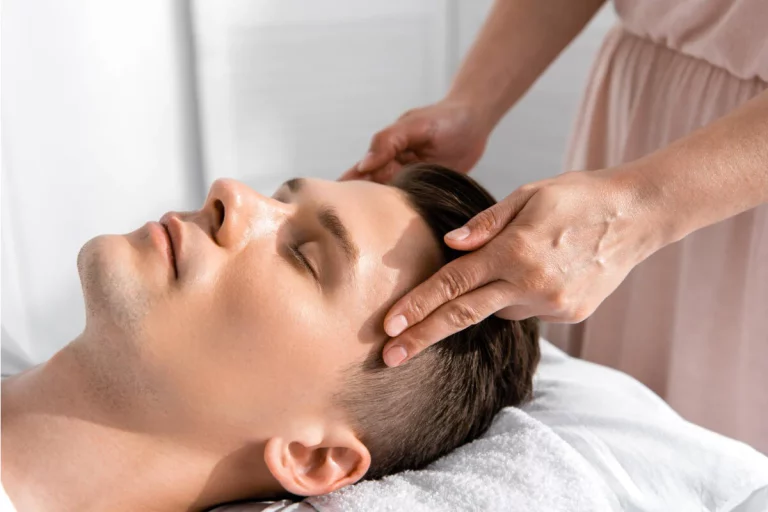How to Give a Back Massage in 2024
Back massages are an excellent way to relax, relieve tension and offer a moment of tranquillity in a busy life. Whether you’re a novice or just looking to improve your back massage technique, this guide will walk you through the process of giving a soothing back massage. Giving a back massage involves more than just applying pressure; it’s about understanding the anatomy of the back and using techniques that provide relaxation and relief. Start by creating a soothing environment, choosing the right oil or lotion, and ensuring the person is comfortable. Begin with gentle strokes to warm up the muscles, progressively move to deeper kneading, and focus on areas of tension. Always maintain a rhythm and be attentive to the person’s comfort level.
How to Give a Good Back Massage
The right balance of pressure, rhythm, and technique characterizes a good back massage. Communicating with the recipient is important to understand their needs and comfort levels. Use a variety of techniques like effleurage (long, gliding strokes), petrissage (kneading), and tapotement (gentle tapping). Pay attention to the entire back area, including the shoulders and lower back, where tension accumulates. Remember, a good massage relieves stress and promotes a sense of well-being.
How to Give Yourself a Back Massage
Self massage can be challenging but beneficial, especially for relieving tension in hard to reach areas like the back. Use tools like a tennis ball or a foam roller. Place the ball or roller against a wall or on the floor and lean against it, targeting areas of tension. Move slowly and apply pressure as needed. Use your hands to apply pressure and massage the upper back in circular motions. This method is beneficial for addressing specific points of tension independently.
How to Give a Back Massage for Lower Back Pain
Lower back pain is a common ailment, and massage can be an effective way to alleviate it. Focus on the lumbar region but avoid direct pressure on the spine. Use gentle, circular motions with your thumbs or fingertips to warm the area. Gradually apply deeper pressure with kneading movements. Be mindful of any painful spots and adjust your technique accordingly. It’s important to communicate with the person to ensure the massage is helpful and not exacerbating the pain. Gentle stretching movements can also be incorporated to relieve tension in the lower back.
How to Give a Back Massage for Beginners Step By Step
For beginners, a step-by-step approach is crucial. Start by warming the oil in your hands and applying it to the back. Begin with light, gliding strokes (effleurage) to spread the oil and warm the muscles. Gradually increase pressure, paying attention to the person’s response. Incorporate kneading movements to work deeper into the muscles. Be mindful of the spine and avoid applying direct pressure on it. Finish with light strokes to soothe the muscles. Remember, practice and sensitivity are essential.
Creating a Relaxing Atmosphere
The atmosphere plays a huge role in how relaxing your massage will be. You need to make sure the room feels calm and peaceful. First, ensure the room is comfortably warm – nobody can relax if they’re shivering! Playing soft, soothing music in the background can help set the mood. Think about dimming the lights as well – bright lights can be harsh and distracting. If you have them, lighting some scented candles can add to the relaxing vibe, but only if the person you’re massaging likes them.
Gathering Your Materials
Before you start, gather everything you’ll need, including massage oil or lotion, a couple of towels, and a pillow. When choosing your massage oil or lotion, try to pick one that’s hypoallergenic. This means it’s less likely to cause an allergic reaction, which is especially important if you’re not sure about the skin type of the person you’re massaging.

Choosing a Comfortable Space
When preparing to give a back massage, the first thing you need to do is find the right spot. A massage table is perfect because it’s designed for this purpose, but don’t worry if you don’t have one. You can also use a firm bed or a padded floor area. Just make sure it’s a stable and comfortable surface for the person receiving the massage.
Positioning
Finally, you’ll need to get the person into the correct position. They should lie face-down. Placing a pillow under their chest can help make them more comfortable, especially if you’re not using a massage table. A rolled towel under the forehead can help keep the neck comfortable if you’re using a bed. It’s all about making sure they’re as relaxed and comfortable as possible before you begin the massage.

Comfort and Consent
It’s really important that the person you’re massaging feels comfortable. This includes being okay with the level of undress and the setting of the massage. Always respect their privacy. If they need to undress, leave the room or turn away, and ensure they can keep on whatever clothing makes them feel at ease.
Warming Up the Muscles
When you start the massage, Begin by warming up the muscles, Using light, soothing strokes with your hands. Imagine you’re smoothing out a sheet on a bed. Start from the lower back and gently up to the shoulders. This helps the muscles relax and get ready for more pressure.

Oil Application
Warm up some massage oil in your hands. It should feel nice and warm, not hot. Then, glide your hands over the back, spreading the oil. This helps your hands move smoothly over the skin and makes the massage more comfortable.
Kneading (Petrissage)
Press a little firmer and use a squeezing or rolling motion with your hands. Pay extra attention to spots where you feel knots or tension.
Using Thumbs
Use your thumbs to make small circles along the back, close to the spine. Be careful not to press on the spine – that can be uncomfortable. Instead, focus on the muscles on either side of it.
Working on Specific Areas
Everyone’s different, so notice where the person you’re messaging seems tight or tense. Use different amounts of pressure and try various techniques to see what works best in each area.

Advanced Techniques
- Percussion (Tapotement): Playing a drum on the back – but gently! Use the sides of your hands or fingertips and lightly tap across the back. Percussion helps to wake up the muscles and feel invigorating.
- Compression: Use the bottom part of your palms and press down on specific areas for a couple of seconds, then lift your hands off.
- Stretching: If the person is okay with it, you can gently stretch their arms and legs. This helps the muscles relax and adds a nice finishing touch to the massage.
Finishing the Massage
Cool Down
Just like after a workout, you need to cool down. Go back to the gentle, gliding strokes you started with and help the muscles settle down after the massage.
Hydration
Offer a glass of water at the end. It helps hydrate the body and flush out any toxins the massage might have released from the muscles.

Conclusion
Giving a back massage is a lot more than just moving your hands over someone’s back. Imagine you’re not just working on their muscles, but also on their sense of calm and comfort. That’s what makes a massage truly special. The first thing to remember is that the environment you massage in should feel like a safe and relaxing haven. Make sure the room is cozy and warm, and play some gentle music in the background to set a soothing tone. As you massage, be mindful of how they respond. Each person is different, so what works for one might not work for another. Pay attention to their reactions and adjust your technique accordingly. If they tense up or seem uncomfortable, ease up on the pressure. The goal is to relieve tension, not cause more.






